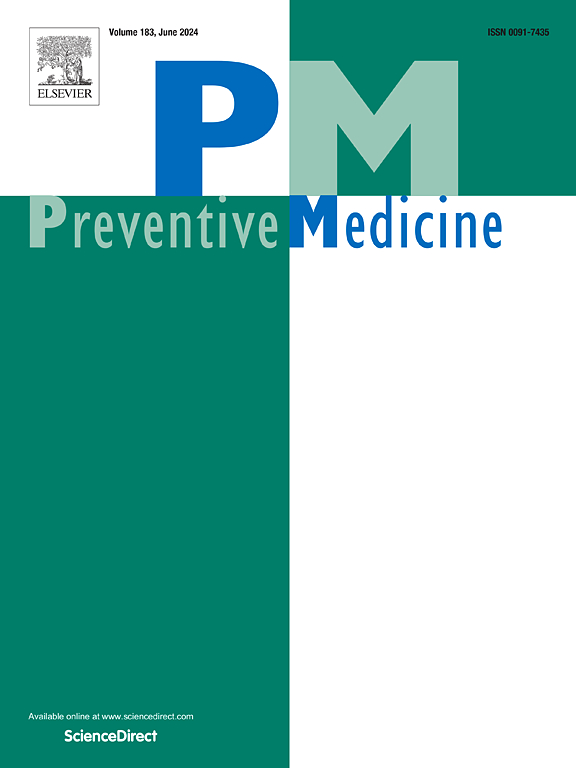Smoking cessation among sexual minority women: Differences in cigarette quit ratios across age, race/ethnicity, and sexual orientation
IF 4.3
2区 医学
Q1 MEDICINE, GENERAL & INTERNAL
引用次数: 0
Abstract
Objective
Sexual minority (SM) women experience tobacco-related disparities and report a higher prevalence of cigarette use, as well as subgroup differences in use, but little is known about their quitting behavior. This study used data from a national sample of United States SM women to examine cigarette quit ratios overall and by age, race/ethnicity, and sexual orientation.
Methods
Using baseline survey data from the Generations Study (2016–2017, N = 812), we calculated quit ratios among SM women reporting lifetime smoking (100+ cigarettes) who reported currently smoking “not at all” relative to those reporting smoking “every day or some days.” Quitting was compared across cohort, race/ethnicity, and sexual orientation, controlling for household income.
Results
SM women reporting lifetime smoking in the older cohort were significantly more likely to report quitting than those in the younger cohort. Bisexual women also reported a greater likelihood of quitting than gay/lesbian women. There was no association between race/ethnicity and the probability of quitting smoking.
Conclusions
SM women remain a priority for tobacco prevention and cessation efforts. There is evidence that the probability of quitting cigarettes differs across sexual orientation and age cohorts, which has implications for tailoring of interventions and tobacco communications.
性少数群体女性的戒烟情况:不同年龄、种族/族裔和性取向的戒烟率差异。
目的:性少数群体(SM)女性经历了与烟草相关的差异,报告了较高的香烟使用率,以及使用方面的亚群体差异,但对她们的戒烟行为却知之甚少。本研究利用美国性少数群体妇女的全国样本数据,研究了总体戒烟率以及不同年龄、种族/民族和性取向的戒烟率:利用 "世代研究"(2016-2017 年,N = 812)的基线调查数据,我们计算了报告终生吸烟(100 支以上)且报告目前 "完全不吸烟 "的 SM 女性相对于报告 "每天或有些日子吸烟 "的 SM 女性的戒烟率。在控制家庭收入的前提下,对不同组群、种族/民族和性取向的戒烟情况进行了比较:报告终生吸烟的老年组群中的 SM 女性报告戒烟的可能性明显高于年轻组群中的女性。双性恋女性戒烟的可能性也高于同性恋女性。种族/民族与戒烟概率之间没有关联:SM女性仍然是烟草预防和戒烟工作的重点。有证据表明,不同性取向和不同年龄组别的戒烟概率是不同的,这对有针对性的干预措施和烟草宣传具有影响。
本文章由计算机程序翻译,如有差异,请以英文原文为准。
求助全文
约1分钟内获得全文
求助全文
来源期刊

Preventive medicine
医学-公共卫生、环境卫生与职业卫生
CiteScore
7.70
自引率
3.90%
发文量
0
审稿时长
42 days
期刊介绍:
Founded in 1972 by Ernst Wynder, Preventive Medicine is an international scholarly journal that provides prompt publication of original articles on the science and practice of disease prevention, health promotion, and public health policymaking. Preventive Medicine aims to reward innovation. It will favor insightful observational studies, thoughtful explorations of health data, unsuspected new angles for existing hypotheses, robust randomized controlled trials, and impartial systematic reviews. Preventive Medicine''s ultimate goal is to publish research that will have an impact on the work of practitioners of disease prevention and health promotion, as well as of related disciplines.
 求助内容:
求助内容: 应助结果提醒方式:
应助结果提醒方式:


